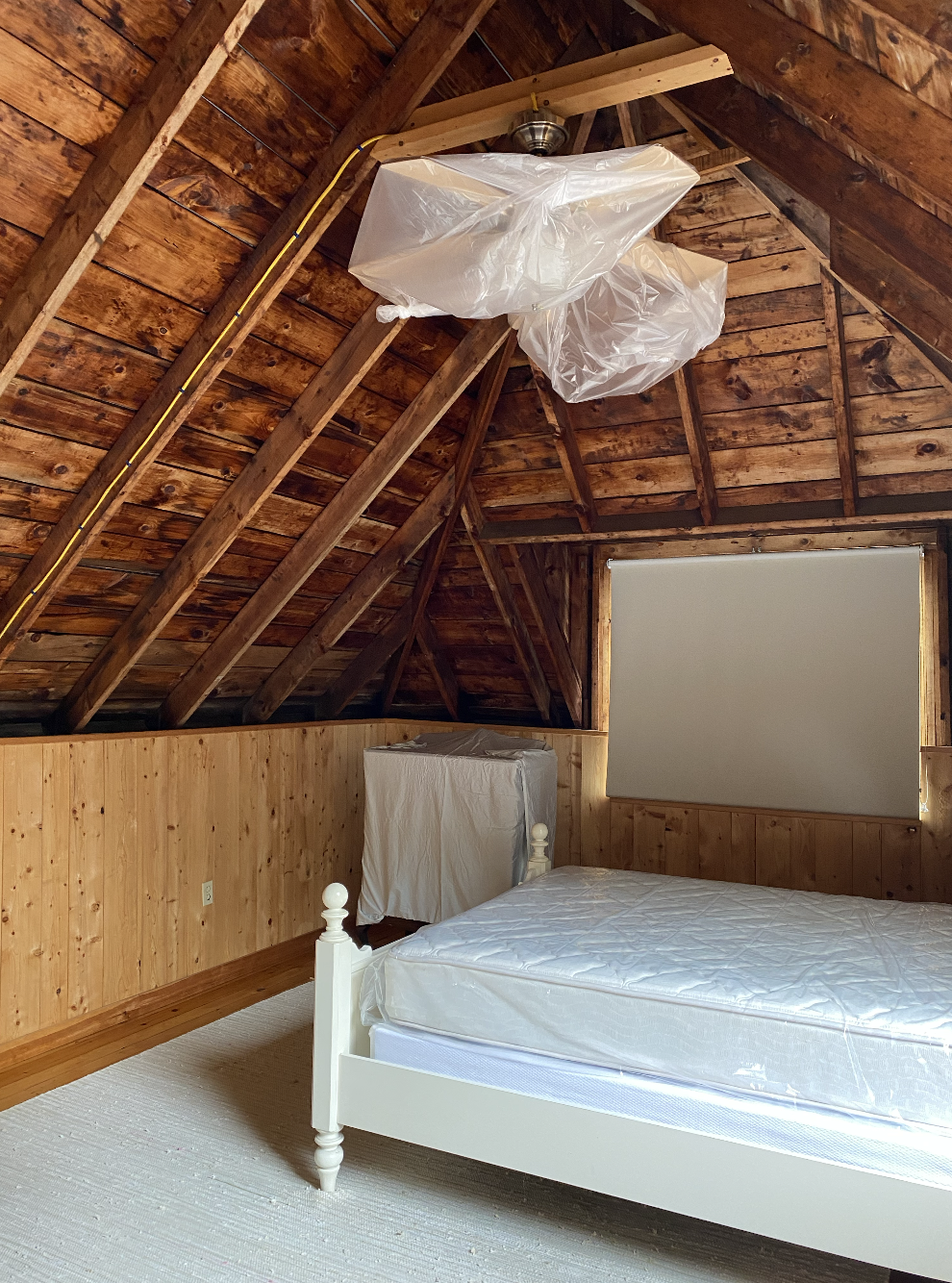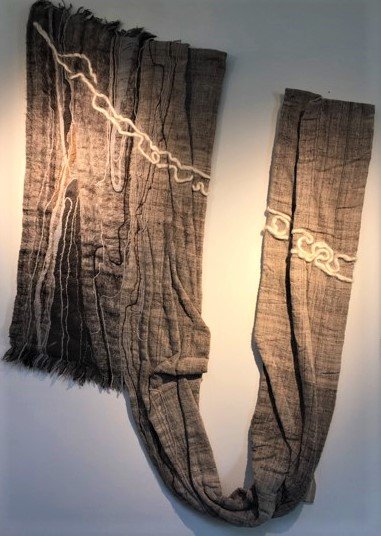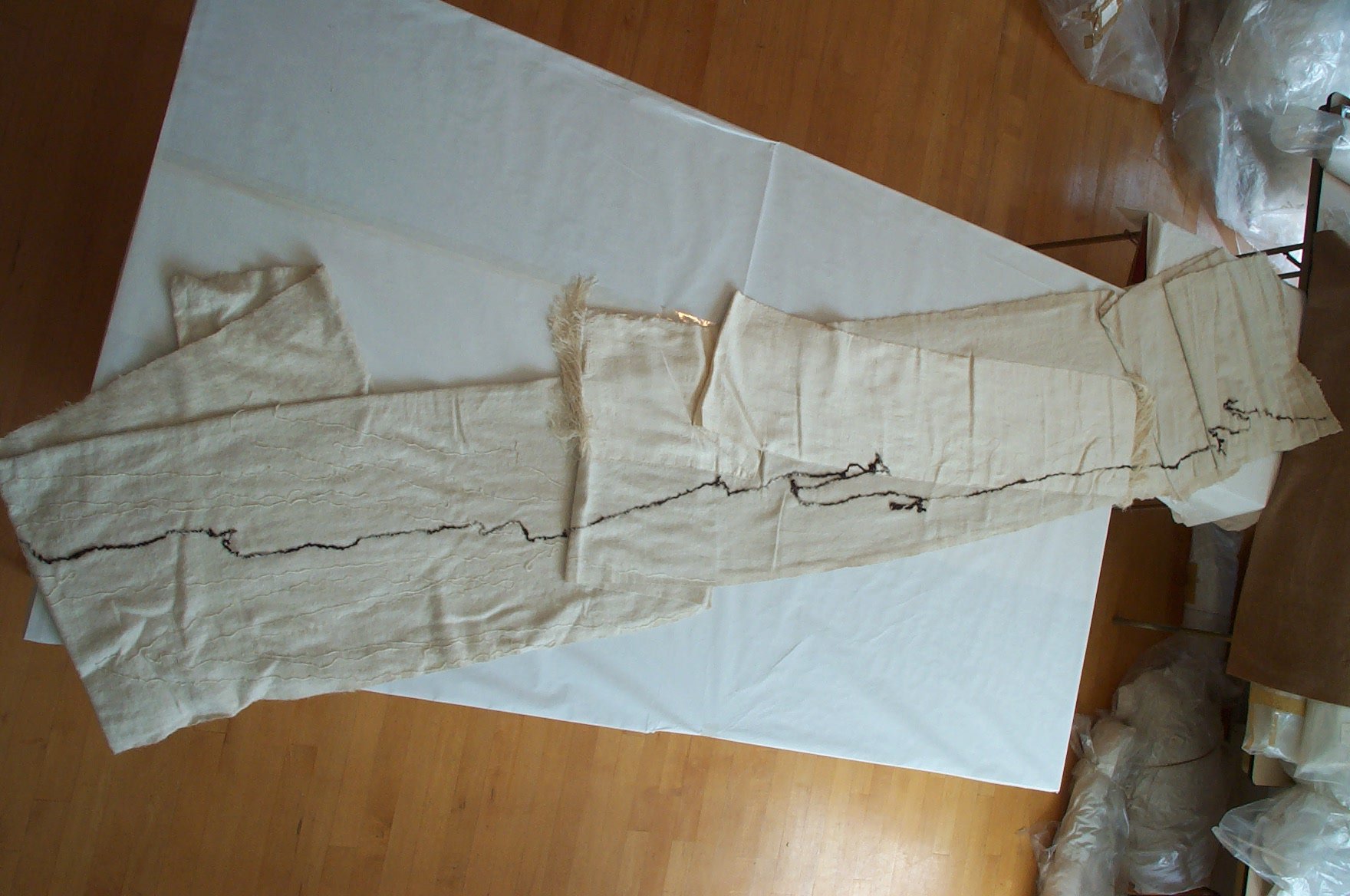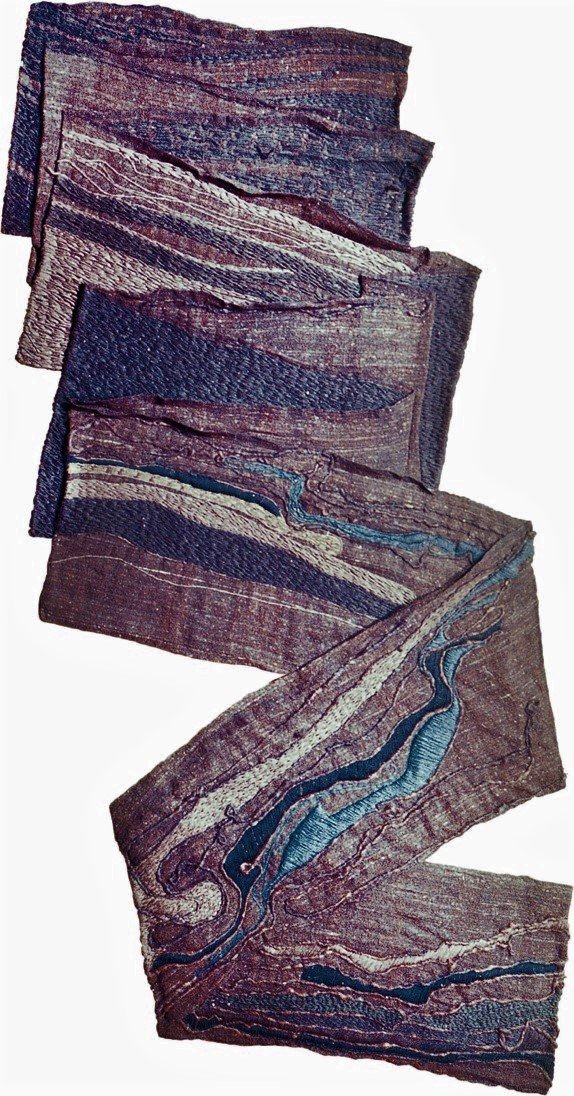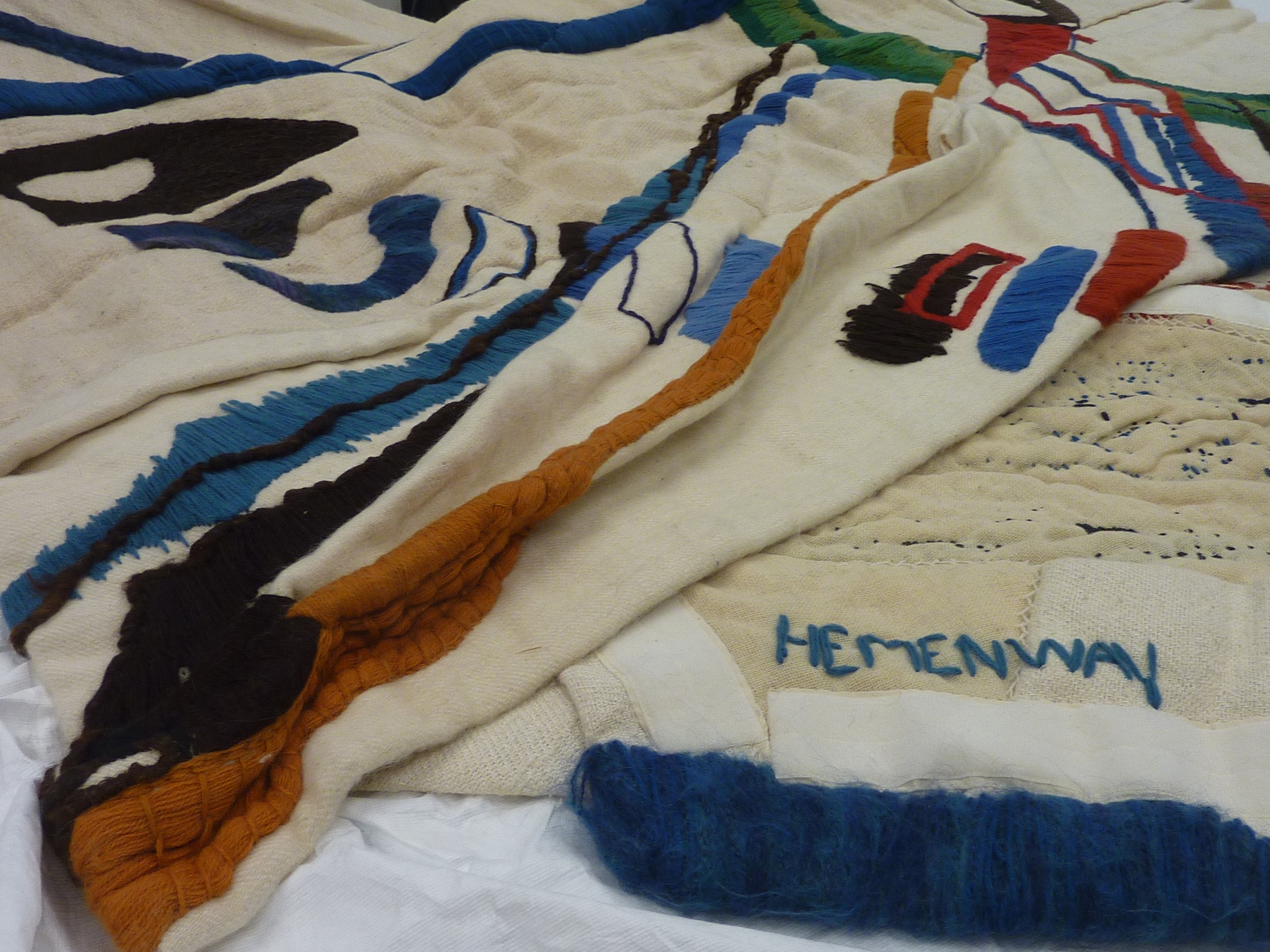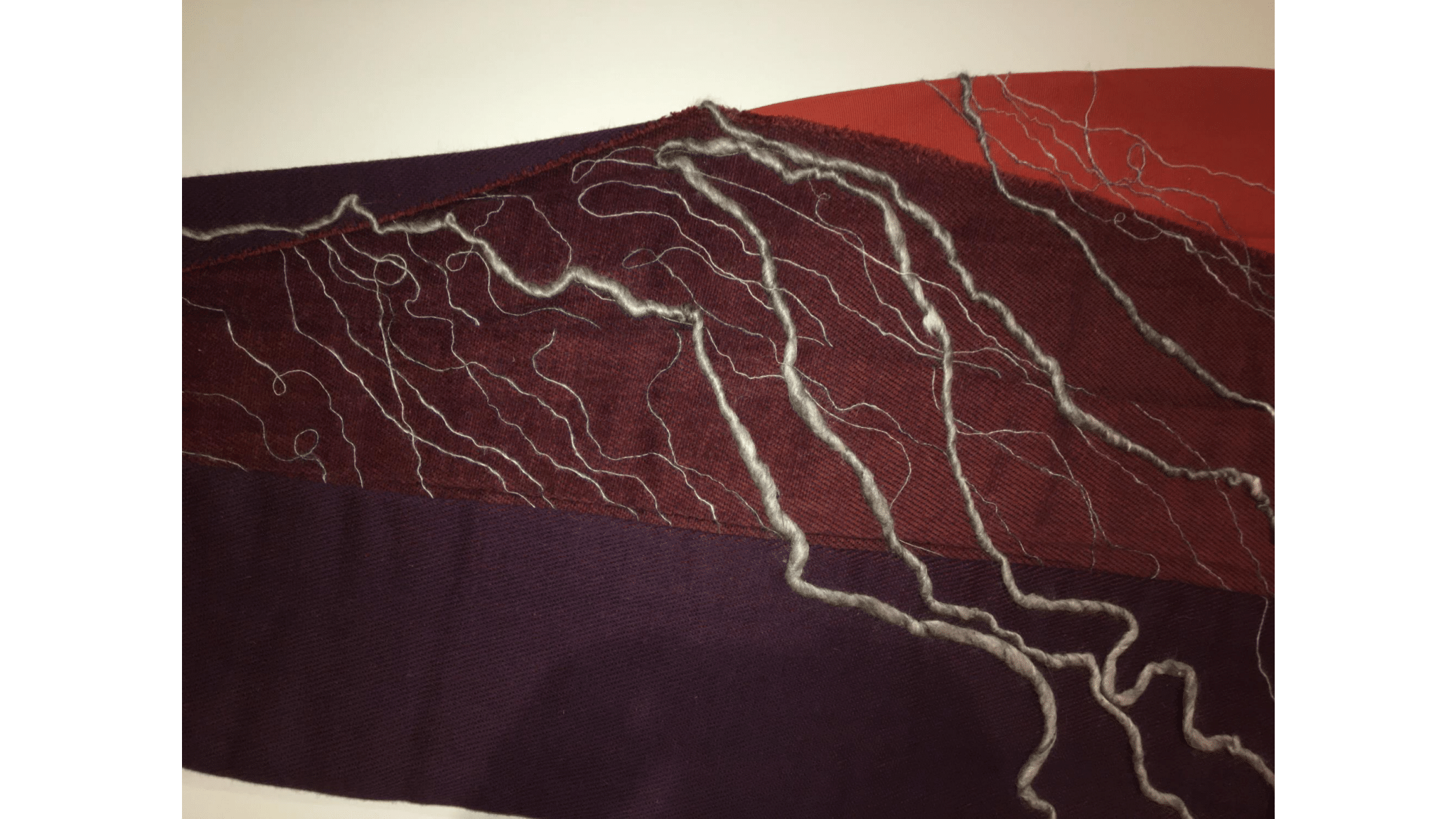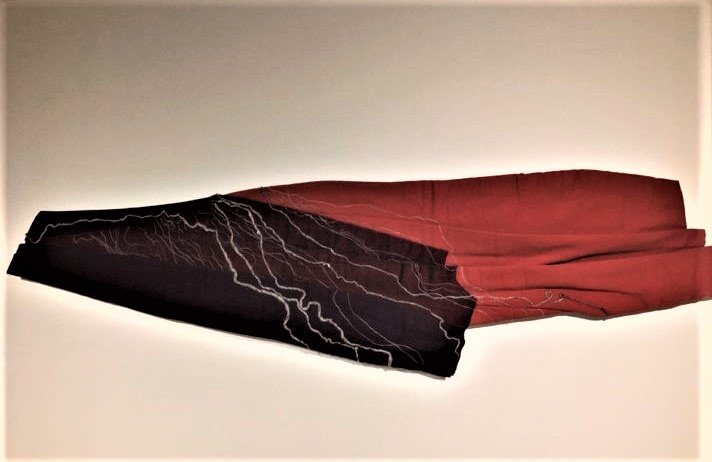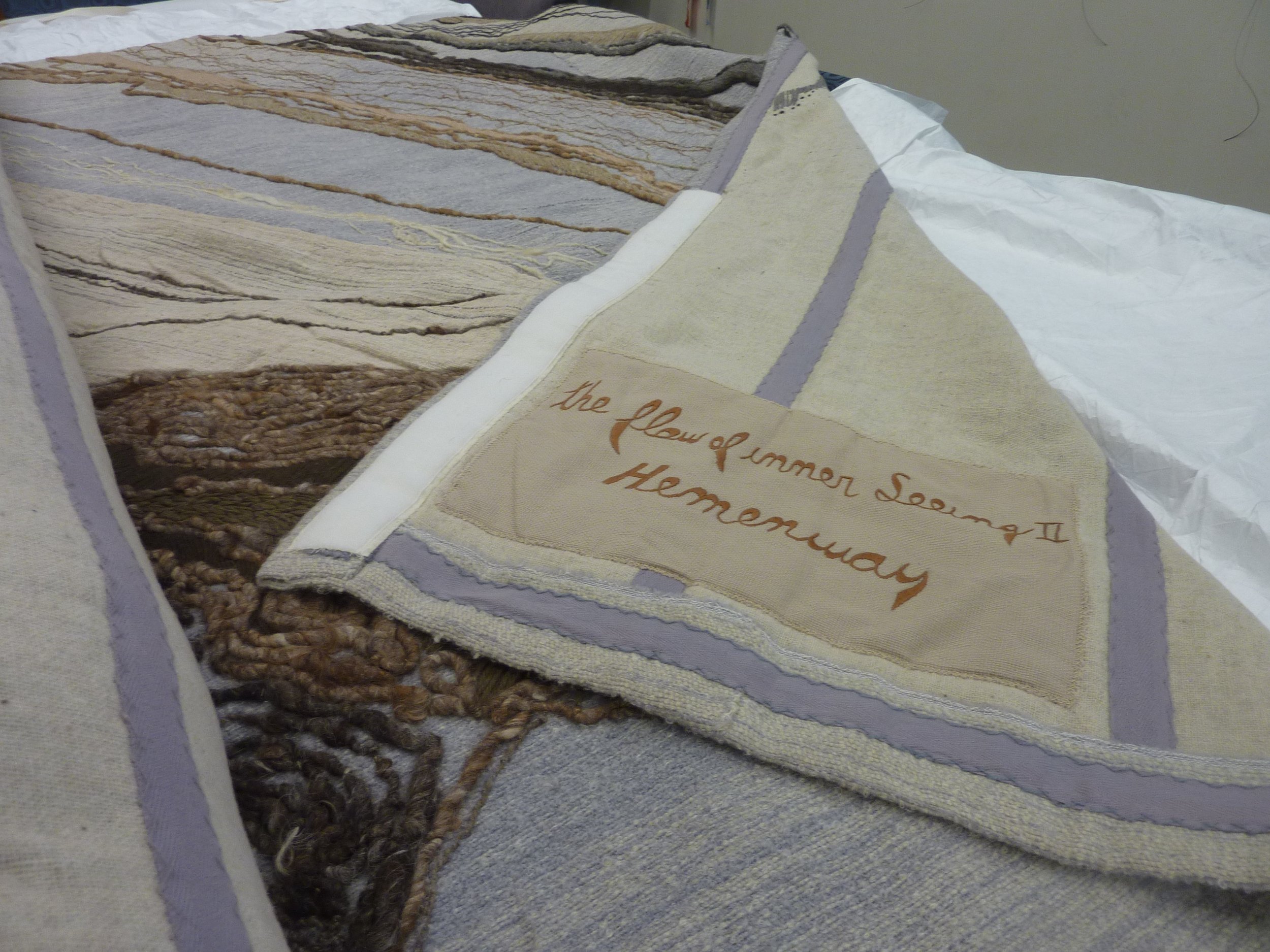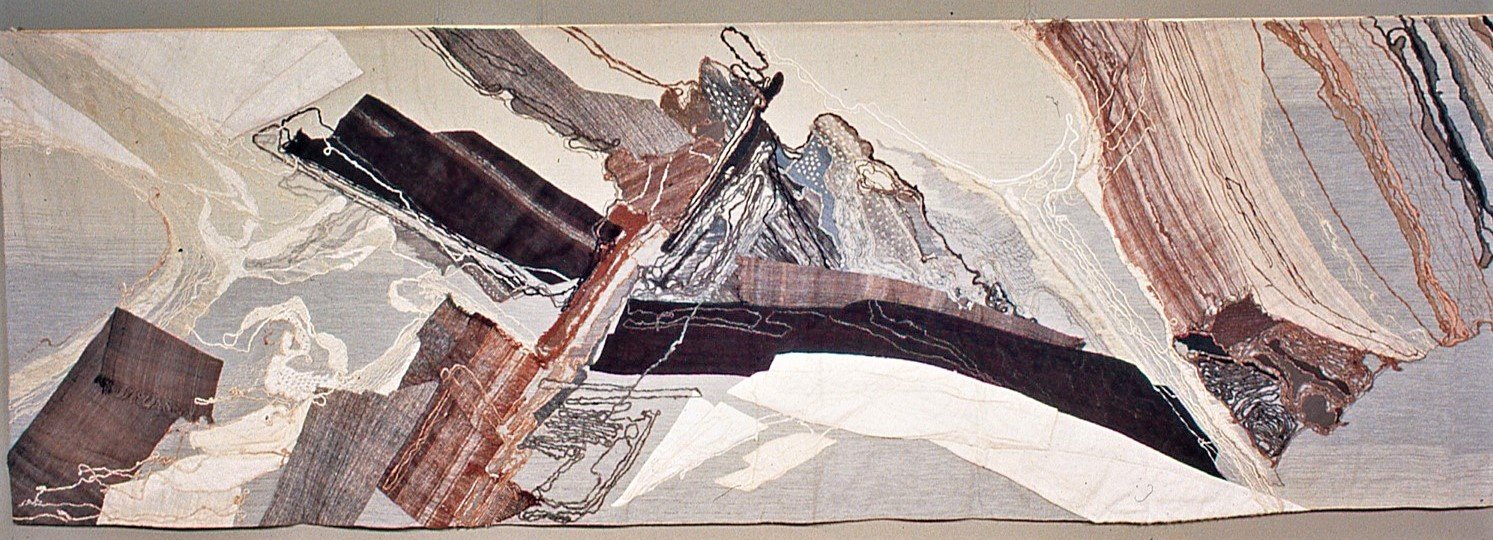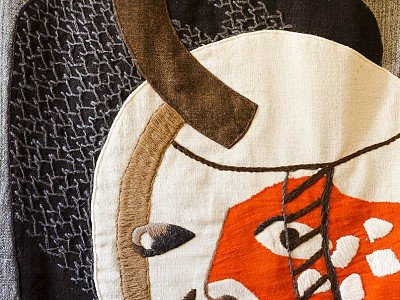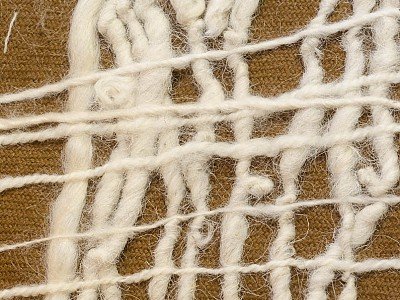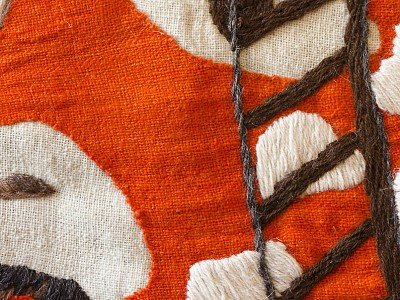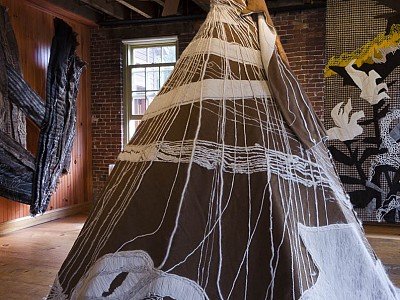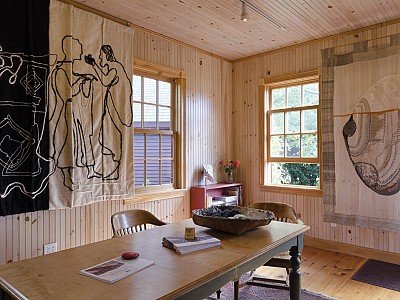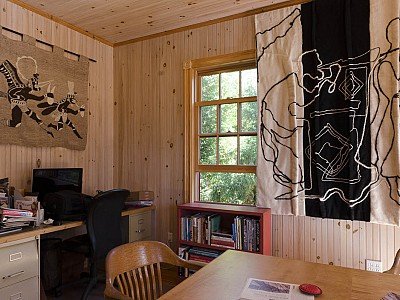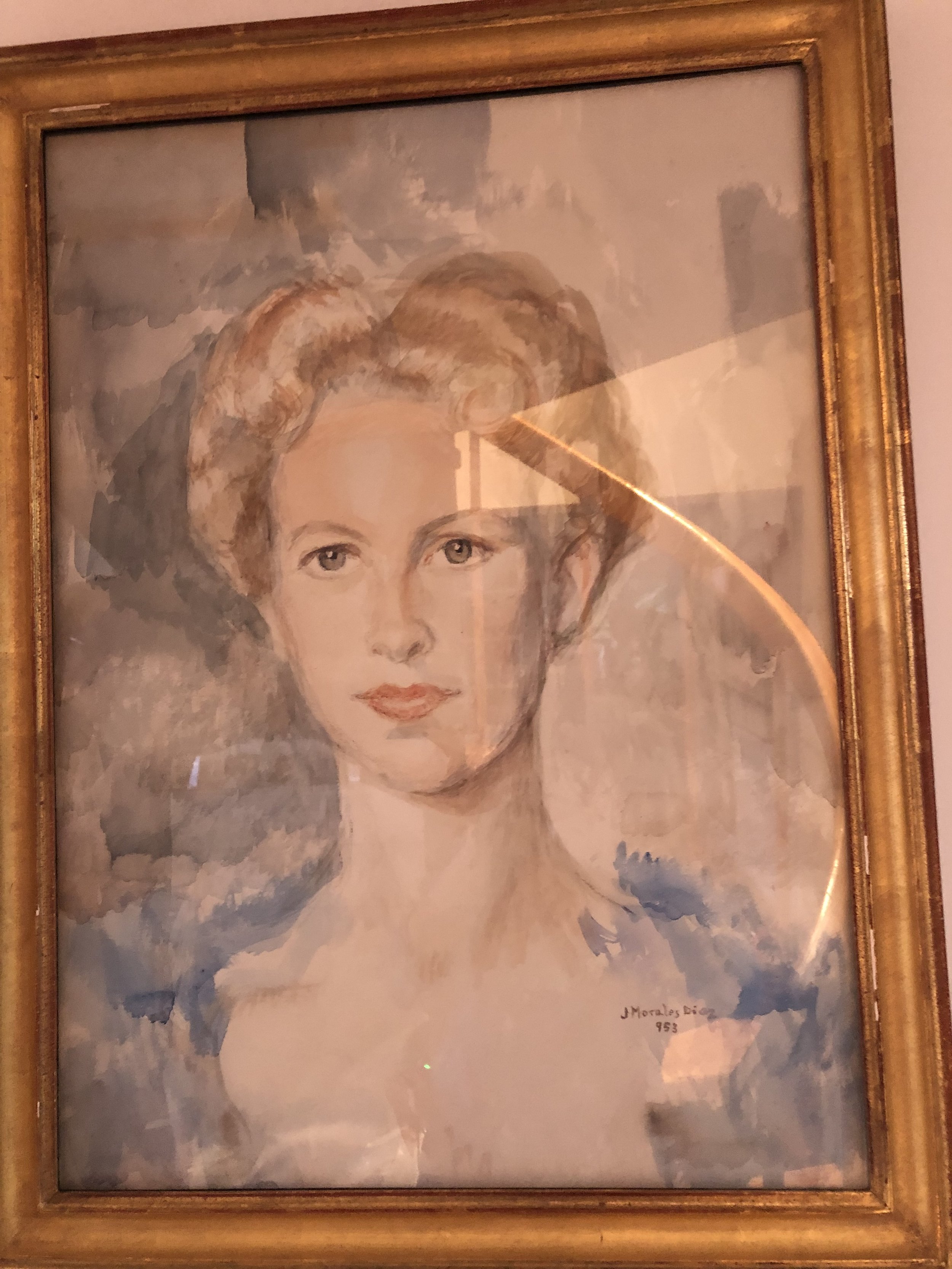First studio, attic space in Boothbay Harbor
Last studio, Boothbay Harbor
First isolated studio (1969), Mouse Island. Previously owned by Harry Emerson Fosdick, the minister of Riverside Church in NYC.
She focused initially on watercolors, primarily landscapes and portraits. As her children grew, so did her commitment of time to art. In 1957, returning to the United States, she studied and worked at the Art Students League of New York and expanded into oils, most often still lifes, portraits, and abstracts.
Hemenway developed her trademark medium—highly original tapestries created from lamb's wool, linen, mohair, alpaca, karakul—almost by accident. In 1966 her art supplies were delayed in transit to La Paz, Bolivia, so she began to work with local fabrics. On a trip into the high Andes, she tucked into a small bag some yarns and odd bits of material. To that she added the rough wools hand-loomed by Bolivian country people, their yarn dyed with wildflowers.
With those basic elements, working with sewing needles in place of a brush, she created an art form she called bayetage. The textile wall hangings began as a celebration of local culture and the pre-Columbian traditions of South American Indian cultures and grew to incorporate representations of nature in the United States, particularly Maine's rocky shores.
In a profile for her Textures of the Earth catalogue (1978), Washington Star art critic Benjamin Forgey wrote: "Painstaking observation of specific visual facts; careful nurturing of authentic personal experiences; skilled translation of these visual and emotional impressions into new tactile forms -- these are the essential facets of Nancy Hemenway's art-making. It is a skilled, poetic enterprise that produces the evocative resonances we can find in these unusual tapestries."
Edward Maeder, who curated her one-woman exhibition at the Los Angeles County Museum of Art in 1988 wrote, “For Hemenway, light and space are crucial and inseparable. Winter light in New England is a subject of major celebration with the contrasts of snow, spruce, and sky against the sea. These images have inspired the vivid colors of her most recent work.”
Besides the many solo exhibitions, her work also was featured in the museums of seven Asian countries as part of a U.S. government tour, and her 1970 show at the Pan American Union became the subject of a U.S. Information Agency film.
Hemenway’s works are in the Metropolitan Museum of Art in New York, the Art Institute of Chicago, the Farnsworth Art Museum in Rockland, Maine, and other public and private collections around the world.
Hemenway, who received a master's degree in Spanish lyric poetry from Columbia University in 1966, also produced a volume of poetry (Abundance), a journal of her creative process (Remembrance and Song), and catalogues that accompanied two of her major traveling exhibitions (Aqua Lapis, Embroidered Wall Sculptures and New England Light).
The artist was a resident artist at the Cummington Foundation and was a fellow at the American Academy in Rome and at the Djerassi Foundation. She was honored by Westbrook College as a Deborah Morton Outstanding Maine Woman and by Wheaton College with a doctor of fine arts degree. She lectured throughout Africa under the auspices of USIA and with a grant from the National Endowment for the Arts. Videos of her creative process and studio work have been preserved along with a substantial collection of her papers, recordings, and correspondence by the Hemenway Foundation.
As a global promoter of living textile artists, Hemenway introduced the work of numerous artists—including Lissy Funk (Swiss, born Germany, 1909–2005) and Ásgerdur Ester Búadóttir (Icelandic, 1920–2014)—to American museums and institutions. She was a voice for women’s rights and mentored many younger women artists as they sought to balance their careers and personal lives.









